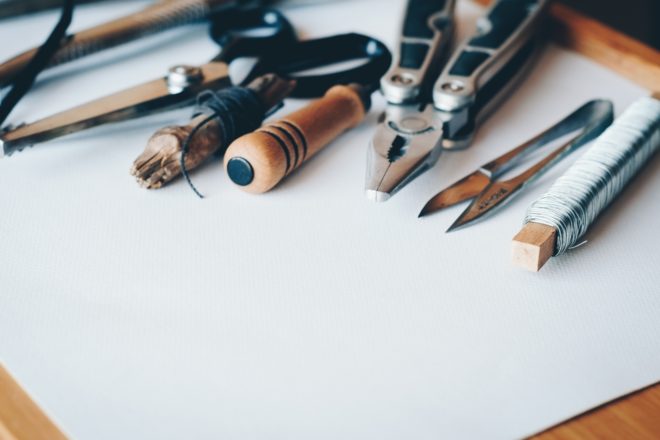“I’m going to start saving money from now on.” How many times have you made this promise to yourself, only to slip up after getting your salary for the month and splurging on that thing that you want but don’t actually need? Look—we get it. It’s hard to say no to the urge to spend, especially when it’s payday and you’ve got crisp bills burning a hole in your wallet. What often happens is that any attempt to be more thrifty is abandoned almost immediately, then followed by vague statements like “I’ll start saving next month” or “I’m young and I don’t really need to save yet” to assuage the guilt of not seeing it through.
The problem is that, for most people, there is a constant battle between their “I don’t really need to buy this” and “treat yourself” mentality—and we all know which of the two is a lot easier to follow. Like all lifestyle changes, learning to become a wiser spender is a tough road to walk. You’re bound to make more than a few missteps or even completely fall off from the path, but committing to small yet certain steps will really move you forward.
We made a ten-step guide to saving that can easily be accomplished and will actually help you save money in the long run if you see it through. Read it below:
Step 1: Assess your current finances

The first step in solving anything is always identifying the problem. You need to have a pretty solid grasp on your current situation in order to understand what needs to be fixed, so begin with an honest assessment of where you are right now in terms of money. How much are you making and spending every month? Ask yourself whether you can actually afford the kind of lifestyle you’re living based on what you’re currently earning. For some people, this is usually the root of the problem; some have this notion of #FeedGoals that they want to live up to and they end up sinking into debt for a couple hundred likes on social media. We all deserve to be able to travel the world and take vacations, of course, but not to the point of jeopardizing our day to day living.
Step 2: Create a budget plan you can actually stick to
Now that you’ve assessed your situation, it’s time to plan out a new routine that will help you achieve your goal. Creating a budget plan will help you map out your expenses every month, but make sure to create one that you can actually stick to. Some people tend to make extreme cuts to their current spending in order to get results as fast as possible, but this usually only leads to them becoming disheartened because of how difficult it is to accomplish. A good starting point would be following the 50/30/20 rule if you’ve never planned a budget before. According to this budget scheme, 50% of your salary should go to necessities (housing, food, transportation, utilities, etc.), 20% should go to your savings, and 30% can be used for your lifestyle choices (hobbies, eating out, vacations, etc.). Monthly payments for your existing debt should fall under the 50% bracket along with your day-to-day expenses while items like phone plans, media streaming subscriptions, and other things you don’t really need to get by should be considered lifestyle choices and not utilities.
Step 3: Know where to best make cuts
Using your new budget plan, figure out what items you’re spending on the most. This is important in order to know which cuts are going to have the most significant impact when you make them. For example, if majority of your salary goes to paying your monthly rent, finding a cheaper place to live or getting a roommate will help you save more money than cutting back on other things that don’t actually cause as much strain to your budget. Think of it this way: making cuts to the bigger items on your budget plan means you can keep the minor expenses you occasionally treat yourself to, like eating out and watching movies.
Step 4: Shop only for what you need

Now that you have a new budget plan, the next step is to make sure you don’t go overboard. Grocery shopping is usually where people end up splurging the most. To avoid overspending, make sure you always come to the store with a list of what you need. Limit your grocery trips to once or twice a month, too. Another advice people would often say is that you should never shop while hungry, because your mind makes you buy more food items when you have an empty stomach. And if you have kids, better leave them at home so they wouldn’t ask you to buy items they don’t really need and throw a fit about it if you refuse to give in.
Step 5: Always look for the cost-effective alternative

When out shopping, always compare the prices of the brands before buying. While there are items that you should never scrimp on like medicine, there are other items where brands don’t differ that much when it comes to quality but differ greatly in price (professional salon shampoo and store shampoo, for example, are made of mostly the same ingredients and have nearly the same effect). You should also consider finding alternatives to pricey habits, if you have any. Always going to coffee shops for your cup of joe? Make the coffee at home and buy a nice coaster to put it in instead. Even if you buy a coffee machine and some good quality coffee beans instead of the cheaper instant coffee packs, you’ll still end up spending less compared to how much you spend in shops in the long run.
Step 6: Learn to cook

Cooking is always more economical than eating out. Learning to cook for yourself instead of relying on takeout will even help you stay healthy as much as it will save you money. If you have a busy schedule and can only spend a few minutes in the kitchen everyday, try cooking meals that you can make in under ten minutes. It’s also a good idea to prepare meals by the batch during weekends, so you’ll only need to reheat them during the work week. Also, keep a stash of instant sauces, canned meat, and other ready-made food items for when you’re really in a pinch.
Step 7: Have basic handyman skills

Aside from cooking, you should also learn basic handyman skills for minor repairs and whatnots around your home or in your car. This way, you wouldn’t have to pay for a repairman and you’ll also feel proud about being independent enough to know how to fix things. If you own a car, you should know how to change your tires, jumpstart your battery, change your oil, etc. And in your home, you should know how to fix leaky faucets, change door knobs, and unclog a drain among other things.
Step 8: Keep track of your progress

Keep track of your spending habits to make sure you are within budget. Also, it will give you a rough estimate of how much you’ve already saved. This is important because it helps motivate you to keep going. There are a wide variety of apps that you can download on your phone for this purpose. All you need to do is log your monthly earnings and expenses, then most of the apps will be able to show you a breakdown of your spending habits. Becoming more mindful of where you spend your money is important in learning how to save.
Step 9: Start an emergency fund

You should start an emergency fund once you have enough money set aside. It should be able to cover large expenses like medical bills or major auto repairs, and should ideally have at least 3 months worth of your monthly expenses so it will be able to support you in case you suddenly lose your job. Think of your emergency fund as your personal insurance—it is important to have one because it will help keep you from sinking into debt from unforeseen incidents.
Step 10: Turn your savings into an investment

In some cases, choosing the cheaper option doesn’t always mean you are able to save more. If you’re living in a rented space, think of how much you’ve already spent on rent in all the years you’ve lived there. That money is money down the drain because you don’t get anything from it. But if you take the same money and invest it in buying your own home, you get something back for your hard-earned cash.
Of course, the reason we save money is to secure our loved ones’ future. And the best way to do that is by making sure that they have a roof over their heads that they can call their own. Investing your money in real estate means that it wouldn’t just be sitting in the bank—it would grow.
San Miguel Properties, Inc is one of the leading property developers in the country today. They take pride in their successful and continuous development of innovative and vibrant communities that transform the way people live, fulfilling the hardworking Filipinos’ dream of owning a home for more than 25 years.

Their projects in General Trias, Cavite will give you the best choices that fit your lifestyle. Maravilla offers classy and sophisticated Spanish Mediterranean-inspired houses; Bel Aldea is the go-to for the modern-day Renaissance man with its merged practicality and aesthetics through elegantly designed townhouse units; and Asian Leaf fuses modern Asian architecture and vibrant landscapes that will be your haven amidst the hustle and bustle of the city. PAR/INQUIRER.net
For inquiries, visit their website at www.sanmiguelproperties.com.ph. ADVT







































